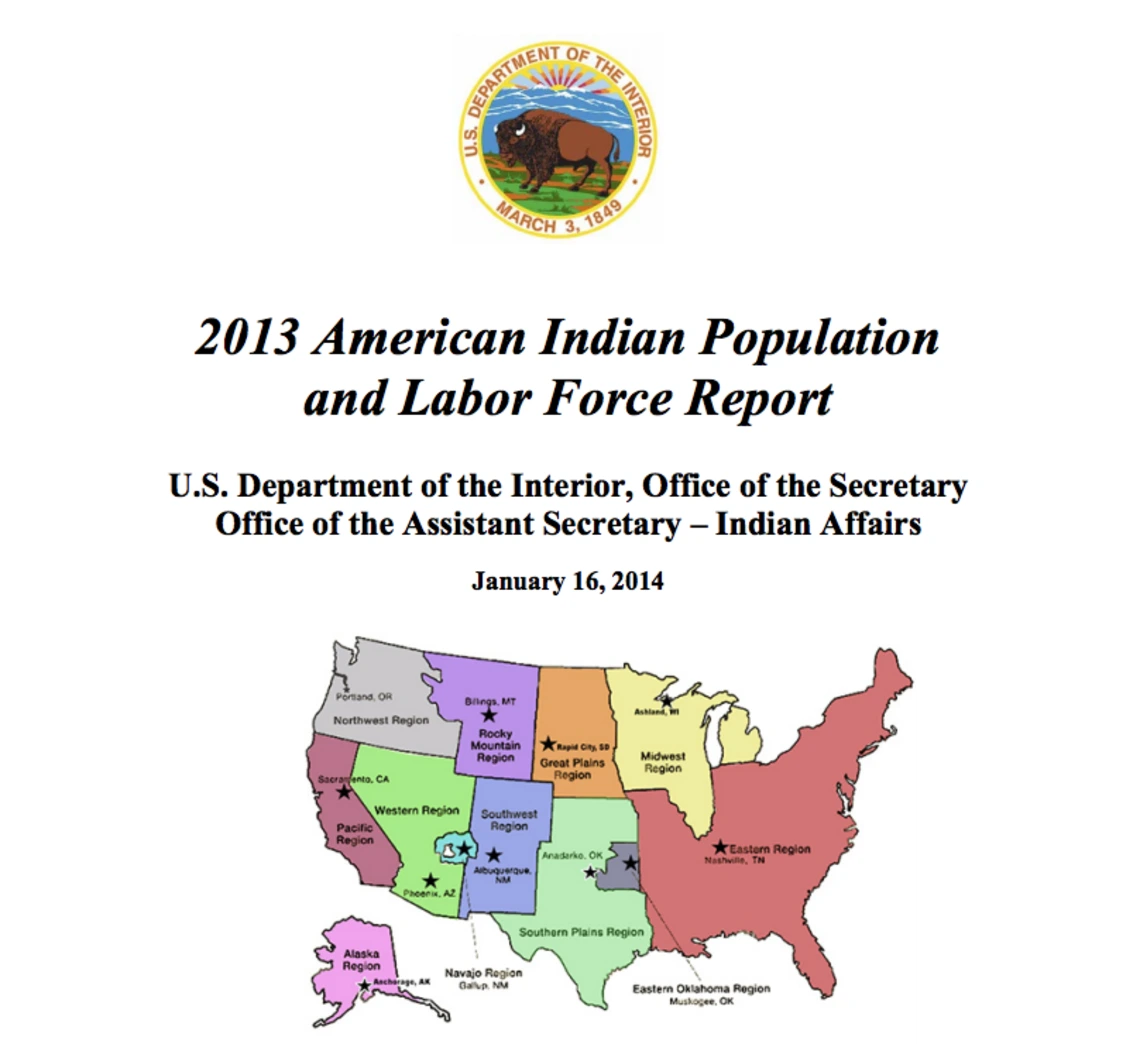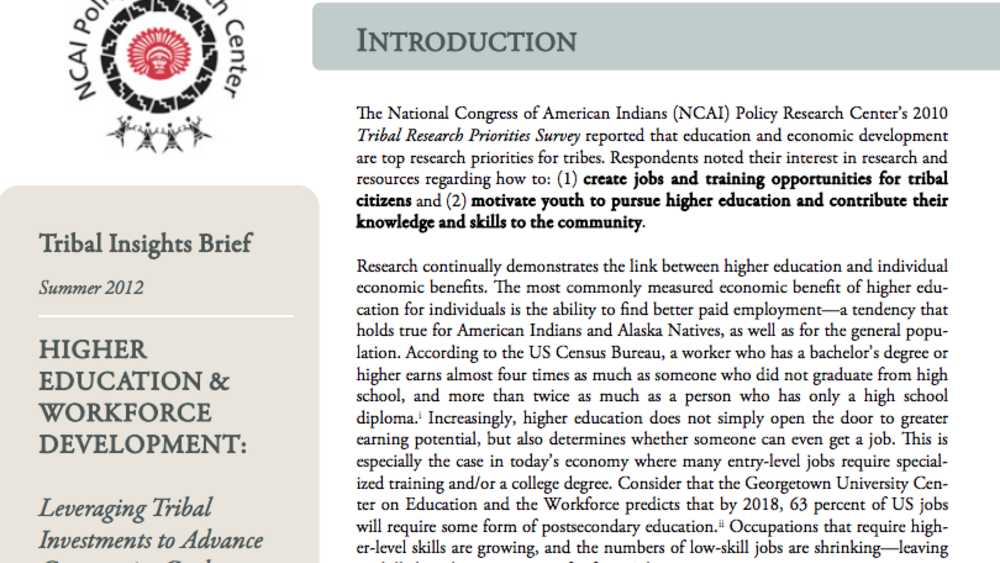This report presents findings from the 2010 Labor Force Survey of American Indians and Alaska Natives, combined with a larger set of publically available statistics produced by the U.S. Census Bureau. This report is prepared in accordance with Public Law 102-477 the Indian Employment, Training, and Related Services Demonstration Act of 1992, as amended. All of the statistics provided in this report are in reference to the year 2010 the most recent year for which adequate statistics were available for the purposes of the report.
This report is based primarily on populations of American Indians and Alaska Natives (AIAN) who are living on or near the tribal areas of federally recognized tribes. Most of the population indicators in this report, and all of the employment indicators, do not include members of federally recognized tribes who are living far away from any tribal area of any federally recognized tribe. This aspect of the report was necessary because of data limitations. Pursuant to the Indian Employment, Training, and Related Services Demonstration Act of 1992, this report provides estimates of “the population available for work and estimates of the employed population. In addition, the report displays an estimated percent of those available for work who are not working for groups of tribes by state, region, and geographic area.
Additional Information
Office of the Assistant Secretary - Indian Affairs. 2013 American Indian Population and Labor Force Report. Office of the Secretary. U.S. Department of the Interior. Washington, District of Columbia. January 16, 2014. Report. (https://www.bia.gov/sites/default/files/dup/assets/public/pdf/idc1-024782.pdf, accessed February 22, 2023)


